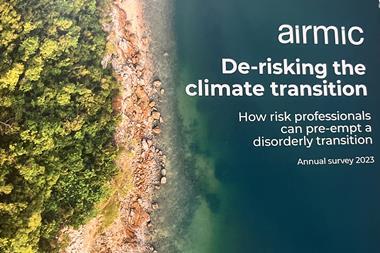Heatwaves are among the world’s deadliest natural hazards, says the World Meteorological Organization. Here’s what risk managers need to know.
The World Meteorological Organization is warning of the urgent need to tackle greenhouse gases amidst global heatwaves, which are among the deadliest natural hazards.
Heat is a rapidly growing health risk, due to burgeoning urbanisation, an increase in high-temperature extremes, and demographic changes in countries with ageing populations.

Hundreds of thousands of people die from preventable heat-related causes each year.
Global temperatures have been at unprecedented levels for several weeks.
The extensive and intense heatwaves this year are alarming, but not surprising because, unfortunately, the conditions being observed are in accordance with projections from the Intergovernmental Panel on Climate Change.
The impacts on people, economies, and the natural and built environment are serious.
“Hundreds of thousands of people die from preventable heat-related causes each year.”
A new study published last week, calculated last summer in Europe alone 60,000 additional people died due to extreme heat. Experts and governments consider this a conservative estimate.
“It is worth noting, the figures are for Europe, which has some of the strongest early warning systems and heat-health action plans in the world,” said Joy Shumake Guillemot, of the World Meteorological Organization/World Health Office joint office on Climate and Health.
The current situation
There is currently a simultaneous heatwave phenomenon occurring, with temperatures in North America, parts of Asia, and across North Africa and the Mediterranean above 40°C for a prolonged number of days this week.
National meteorological and hydrological services have reported a number of daily and station temperature records. Some countries may also break national temperature records.
For instance, WMO accepted a new temperature record for continental Europe of 48.8°C (119.8 °F) measured in Sicily on 11 August 2021. It is possible that this record may be broken in the coming days as the heatwave intensifies.
June saw the warmest global average temperature on record, which continued into July, according to preliminary figures.
These types of events are very concerning and have increased sixfold since the 1980s.
The recently declared El Nino is only expected to amplify the occurrence and intensity of such extreme heat events and impacts on human health and livelihoods.
“Repeated high night-time temperatures are particularly dangerous for human health”
On the weekend of 15-16 July, the US National Oceanic and Atmospheric Administration (NOAA) said excessive heat warnings and advisories covered more than 100 million people in the United States with “dangerous and swelting heat” especially across much of the Western USA.
Areas at risk in the southwestern USA include California, southern Nevada and Arizona. In South-Central and Southeast USA, maximum heat index values could near or exceed 110 ° Fahrenheit (43° C).
For instance, Phoenix, Arizona, has suffered an extended streak of exceptionally high temperatures.
That will continue, with daytime maximum temperatures of at least 116°F (46.7°C) until Friday 21 July and overnight low temperatures of more than 90°F (32.2°C), according to the US National Weather Service.
Overnight minimum temperatures are expected to reach new highs.
This is concerning because repeated high night-time temperatures are particularly dangerous for human health because the body is unable to recover from hot days, leading to increased cases of heart attacks and death.
“Worldwide, more intense and extreme heat is unavoidable – it is imperative to prepare and adapt as cities, homes, workplaces are not built to withstand prolonged high temperature”
Whilst most of the attention focuses on daytime maximum temperatures, it is the overnight temperatures which have the biggest health risks, especially for vulnerable populations.
“We need the world to broaden its attention beyond the maximum temperature alone. In many locations where the maximum is reaching into the high 40°Cs and higher, the temperature may still be near 40°C at midnight.
”In these circumstances, the minimum temperature is more important for health and failing critical infrastructure during extreme heatwaves,” said senior WMO extreme heat advisor John Nairn.
“Worldwide, more intense and extreme heat is unavoidable – it is imperative to prepare and adapt as cities, homes, workplaces are not built to withstand prolonged high temperatures – and vulnerable people are not sufficiently aware of the seriousness of the risk heat poses to their health and wellbeing,” said Dr Nairn.
Sea surface temperatures (SSTs) of the Mediterranean Sea will be exceptionally high over the coming days and weeks, exceeding 30°C in some parts, and more than 4°C above average in a large part of the western Mediterranean.
The impacts of marine heatwaves impacts include the migration of species and extinctions and the arrival of invasive species with consequences for fisheries and aquaculture.
The impact on insurance
The first six months of 2023 featured above-average natural catastrophe losses, according to a new report from Gallagher Re.
El Niño is poised to bring further influence on global weather/climate events through the end of the year.
Total direct economic losses from natural hazards were preliminarily estimated at $138billion. The cost covered by private insurance or public insurance entities tallied $52billion. This marked a protection gap of 63% ($86billion).
The report said: ”With the World Meteorological Organization and NOAA each confirming the arrival of El Niño, it raises the potential of 2023 ending as one of the warmest years ever officially recorded.
”Global temperatures tend to be warmer during El Niño phases, and continued warming that can be directly attributed to anthropogenic fueled climate change only amplifies the effects that El Niño has on the earth’s environment.
”NOAA cited that there was a 20.2% chance that 2023 will eventually end as the warmest year on record dating to 1850, and a 97.1% chance of ranking in the top five.
“As El Niño becomes further established, and likely follows patterns of historical El Niño phases, it was expected that the expanse of warm areas will continue to increase in spatial coverage through the rest of 2023.”
How to tackle the risks
Tried, tested, and iteratively updated response strategies and communication plans are needed to target both the general population and vulnerable groups such as older adults or outside workers; displaced and marginalised populations.
WMO, through the ’Early Warnings for All Initiative’ is strengthening member capacity to develop and deploy impact-based warnings. This includes updating guidance on heat health warning systems and developing standardised terminology and definitions for extreme heat.
It says that harmonised approaches and categorisation of heatwave intensity will standardise and help scale up the implementation of impact-based forecasts and warnings worldwide.
“This underlines the increasing urgency of cutting greenhouse gas emissions as quickly and as deeply as possible”
Various WMO programmes support research on extreme weather and urban heat and promote the global scale-up of protective policies such as heat action plans that incorporate early warning and response systems that target vulnerable people and critical supporting infrastructure.
“The extreme weather – an increasingly frequent occurrence in our warming climate – is having a major impact on human health, ecosystems, economies, agriculture, energy and water supplies.
“This underlines the increasing urgency of cutting greenhouse gas emissions as quickly and as deeply as possible,” said WMO Secretary-General Prof. Petteri Taalas.




















No comments yet